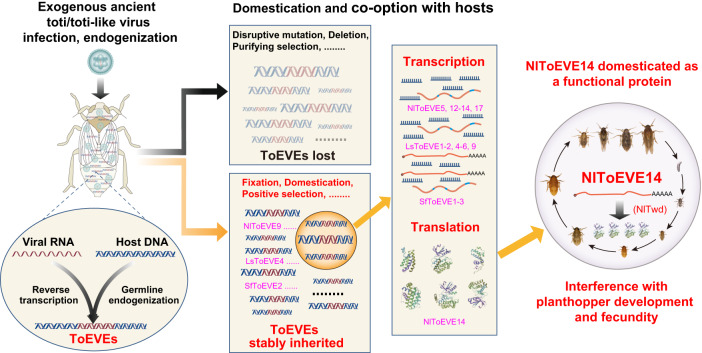Fig. 7. A schematic diagram illustrating the long-term co-evolution between totiviruses and planthoppers and the novel cellular functions of Nilaparvata lugens that are derived from domesticated NlToEVE14.
I Replication of ancient exogenous toti/toti-like virus in planthoppers resulted in the endogenization of ToEVEs into the germ-line cells of the host chromosome. II The integrated ToEVEs underwent host selection forces during evolution, leading to them being either lost (detrimental effects) or stably inherited by the host genome and possibly spreading throughout the planthopper population (neutral or advantageous effects). III A number of the inherited ToEVEs are transcriptionally active with different forms of transcripts (small RNA, mRNA, etc.) or even translated into an authentic protein (NlToEVE14). IV The functional study provides convincing evidence that NlToEVE14 plays essential roles in the development and fecundity of N. lugens, suggesting that NlToEVE14 has been co-opted and serves as a novel host cellular protein.

